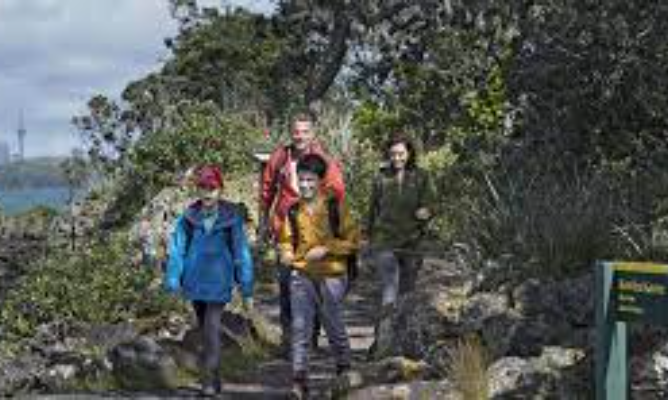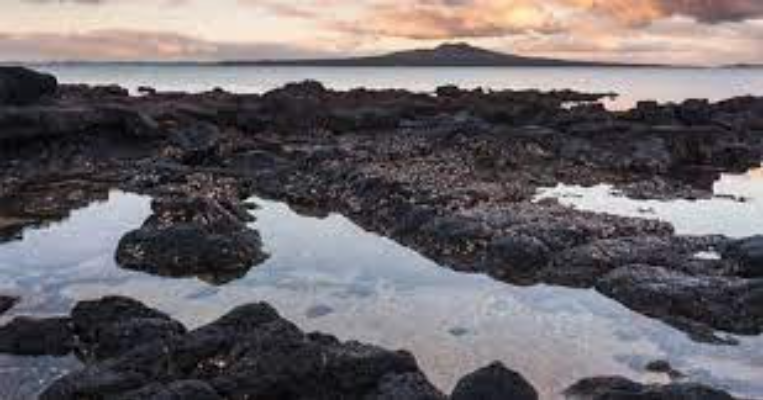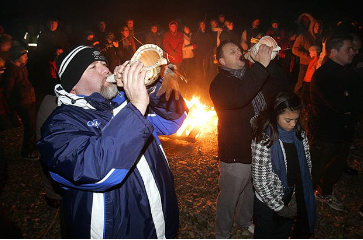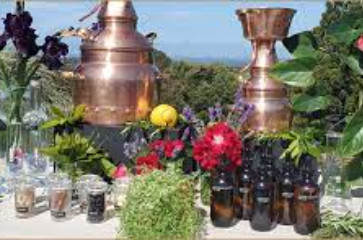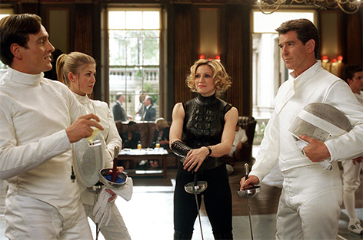Walk on well-formed paths through ancient lava fields that now support the largest pōhutukawa forest in the world and provide a home to dozens of shore, sea and forest birds.
Rangitoto emerged from the sea approximately 600 years ago in a series of fiery volcanic explosions. It is the youngest volcano in Tāmaki Makaurau and sits right next to the oldest island, Motutapu, which is estimated to be more than 160 million years old. A 7km round trip which is of about a two hour duration. Rough and uneven ground – the track crosses lava fields. Always check the DOC website for changes that might affect your trip. Good foot wear and food and water is essential. There are no rubbish bins on the island – take your rubbish back with you.

